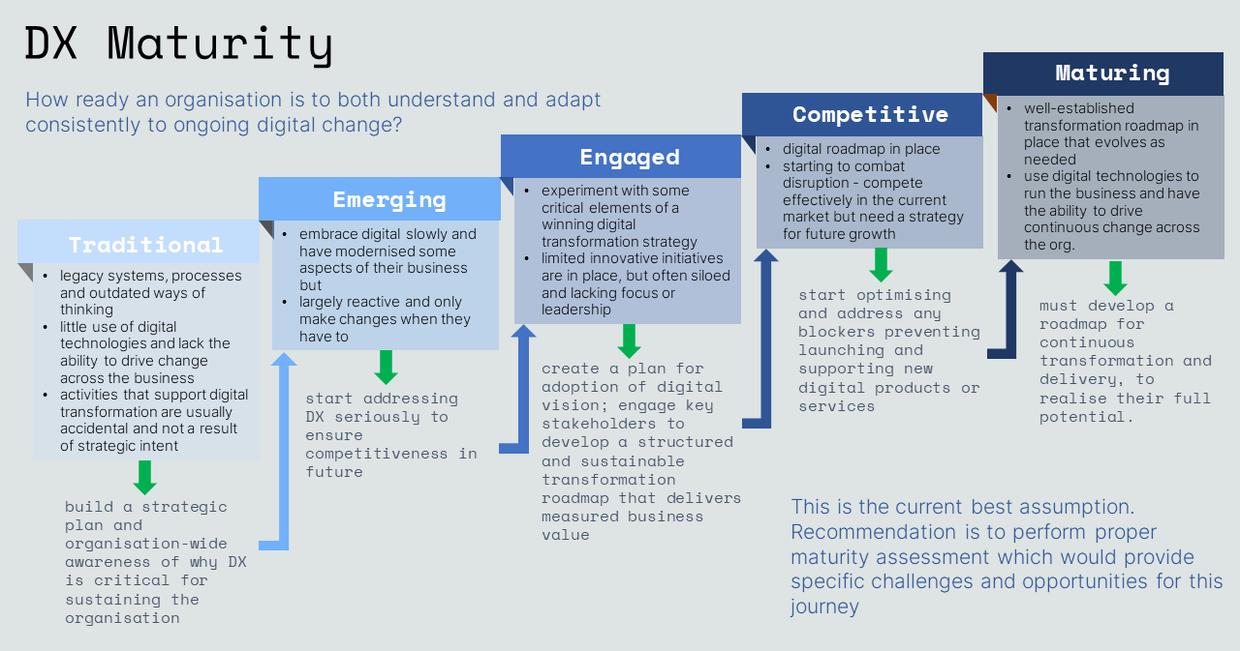Where does your organization currently rank? What are your goals? Where is potential for improvement? What should you focus on?
In order to be able to support an organization with the right tools for digital transformation, an initial evaluation is required. There are numerous digital maturity assessments (DMA) on the market of varying quality and with different methods. Developed for use by commercial enterprises, they often have common features and strengths, but are largely unsuitable for use in the NPO sector.
Most of them are not tailored enough to the needs of an NPO, they are too theoretical and cannot be implemented in practice. All too often, these DMAs refer purely to the external impact of an organization (marketing, UX/UI website) and focus too little on the individual situation. If they do, they are usually strongly oriented towards commercial aspects. Yet it is precisely the organizational form and internal processes that are decisive for how well an organization performs in the digitalized market.
That is why we have developed a multi-stage internal Digital Maturity Assessment specifically for NPOs in collaboration with the Austrian Institute of Technology (AIT). Based on this, we can determine the current level of digital maturity in the respective dimension.
The 5 steps to digital maturity


1. Orientation
The crosscom DMA is different from other DMAs in that not only the external impact of an organization is checked and evaluated, but that we look at the organization as a whole. Besides communication, many factors play a role: What is your vision/mission? How can digital tools help you better achieve your vision? How secure is your data? How effectively is it collected and used? What skills are available in your team and how can you use them? The opportunities to optimize processes within an organization are numerous and profound. To answer these questions, we first need to determine what your goals are and where to begin in the organization to achieve those goals.
2. Survey and Documentation
In addition to the survey provided here, we will create a questionnaire individually tailored to your organization. Often organizational structures have grown historically and competencies lie with other people than would actually be expected. In addition, there are also peculiarities in certain processes, goals and involved persons within an organization. In order to minimize the falsification of the results of a standardized questionnaire due to these variables, filtering for certain questions, for example, is omitted or set differently. Sometimes whole categories have to be excluded because they are not relevant for a certain organization at all.
The evaluation of the survey allows us to make visible any weaknesses and strengths of an organization and to unravel basic structures. In addition, qualitative interviews give us a better overview of everyday processes, wishes and competencies of the employees and together we find out how these can be classified in the Digital Transformation Journey.

3. Evaluation and analysis
After evaluating the surveys, we then present the results in a group workshop. In joint discussions we want to show which deficits exist in your organization and which strengths could be built upon in the future.
4. Presentation of the results
Recommendations and ideas developed on the basis of the results of the crosscom DMA should now be used to make a decision on the approach to be taken to the Digital Transformation Journey in your organization. For this purpose, we provide a summary of the results including long-term perspectives, quick wins, recommendations and next steps, as well as a process map.
5. Second evaluation
After the measures have been effective for some time, we repeat a lean version of the DMA later (between 2 and 3 years after the initial DMA) in order to document the progress and effectiveness of the measures and to be able to make readjustments. The employees of the organization are then already familiar with the methods and can evaluate as far as possible on their own. We then provide only selective support. It it is often easier for us from an external perspective to point the finger at the relevant areas or to address less successful measures.